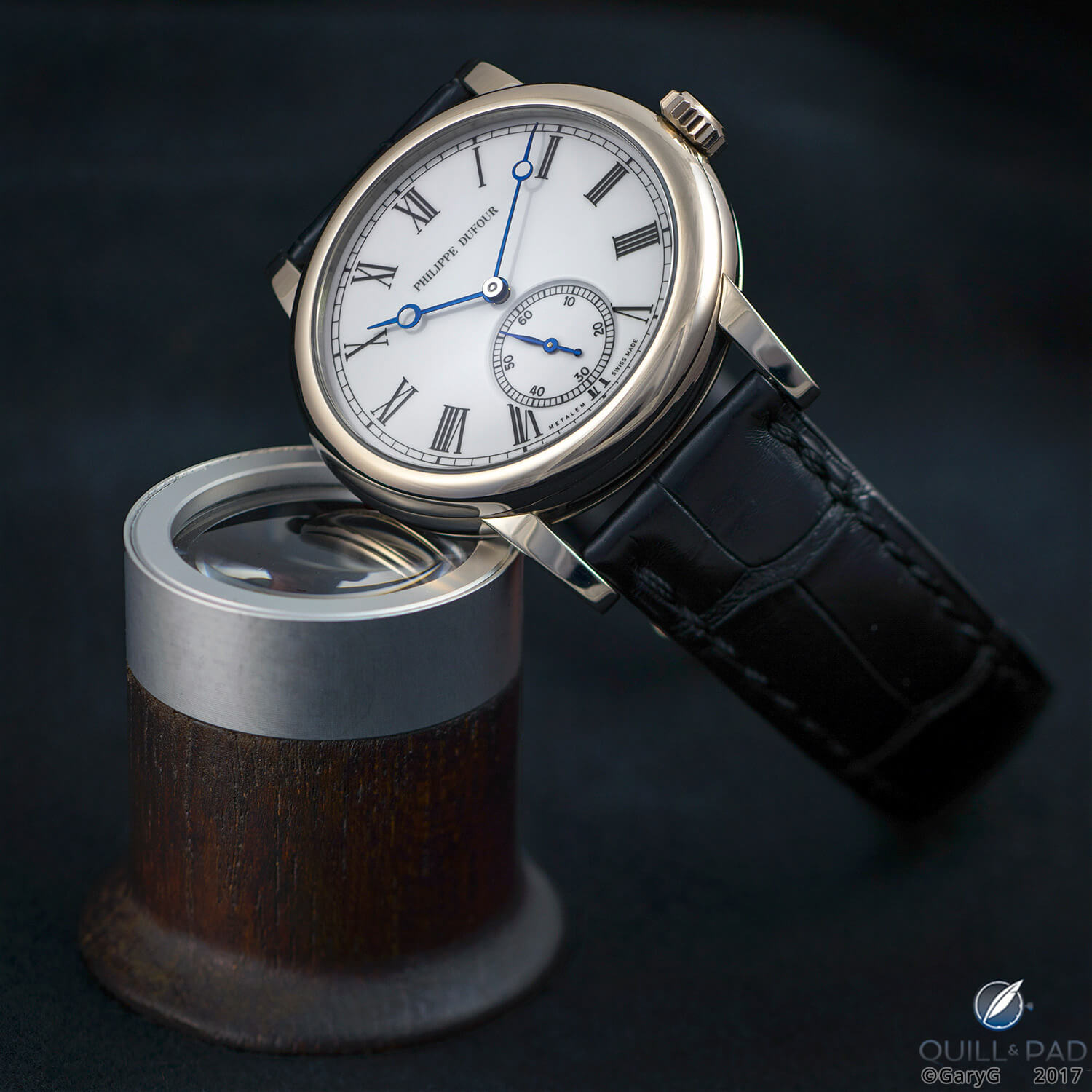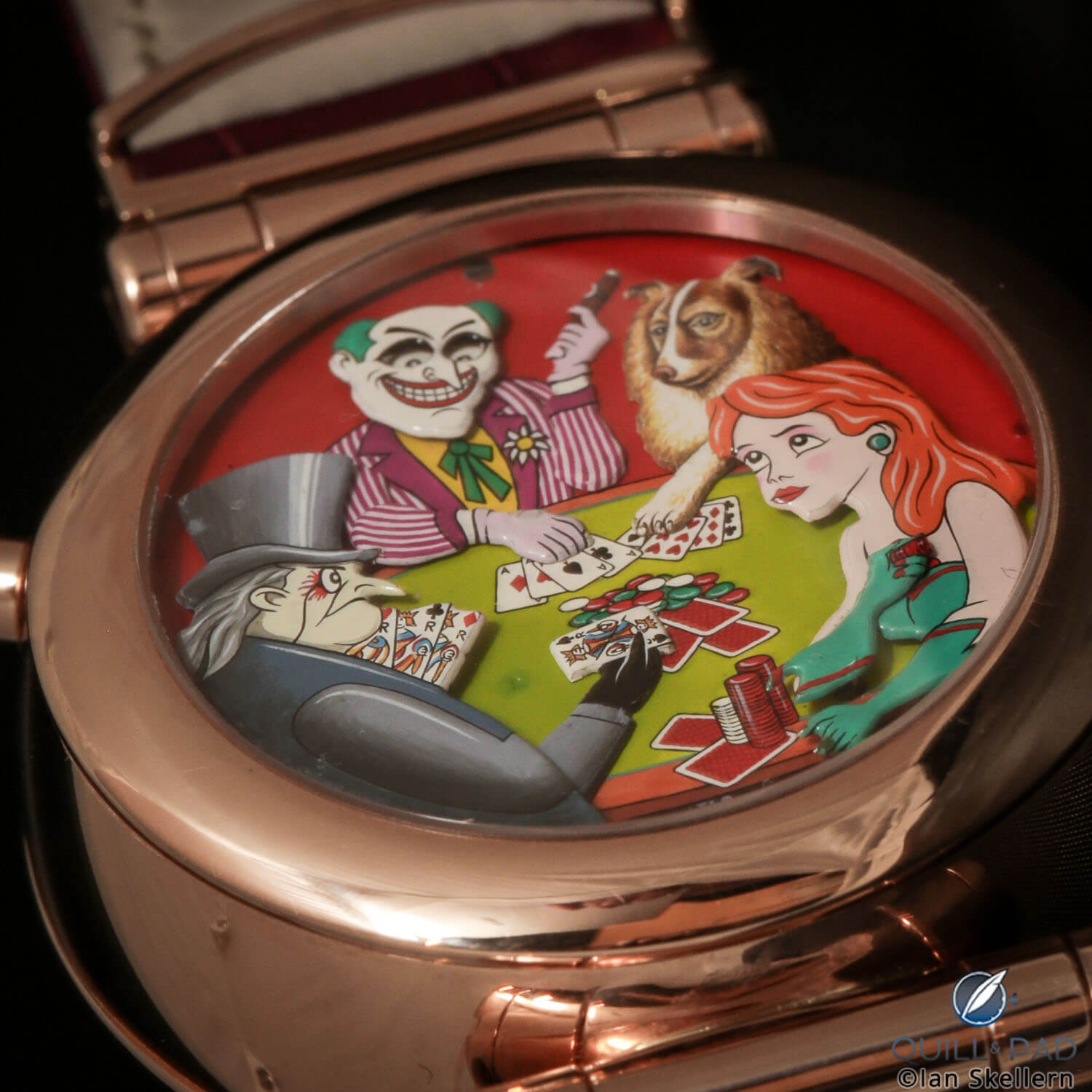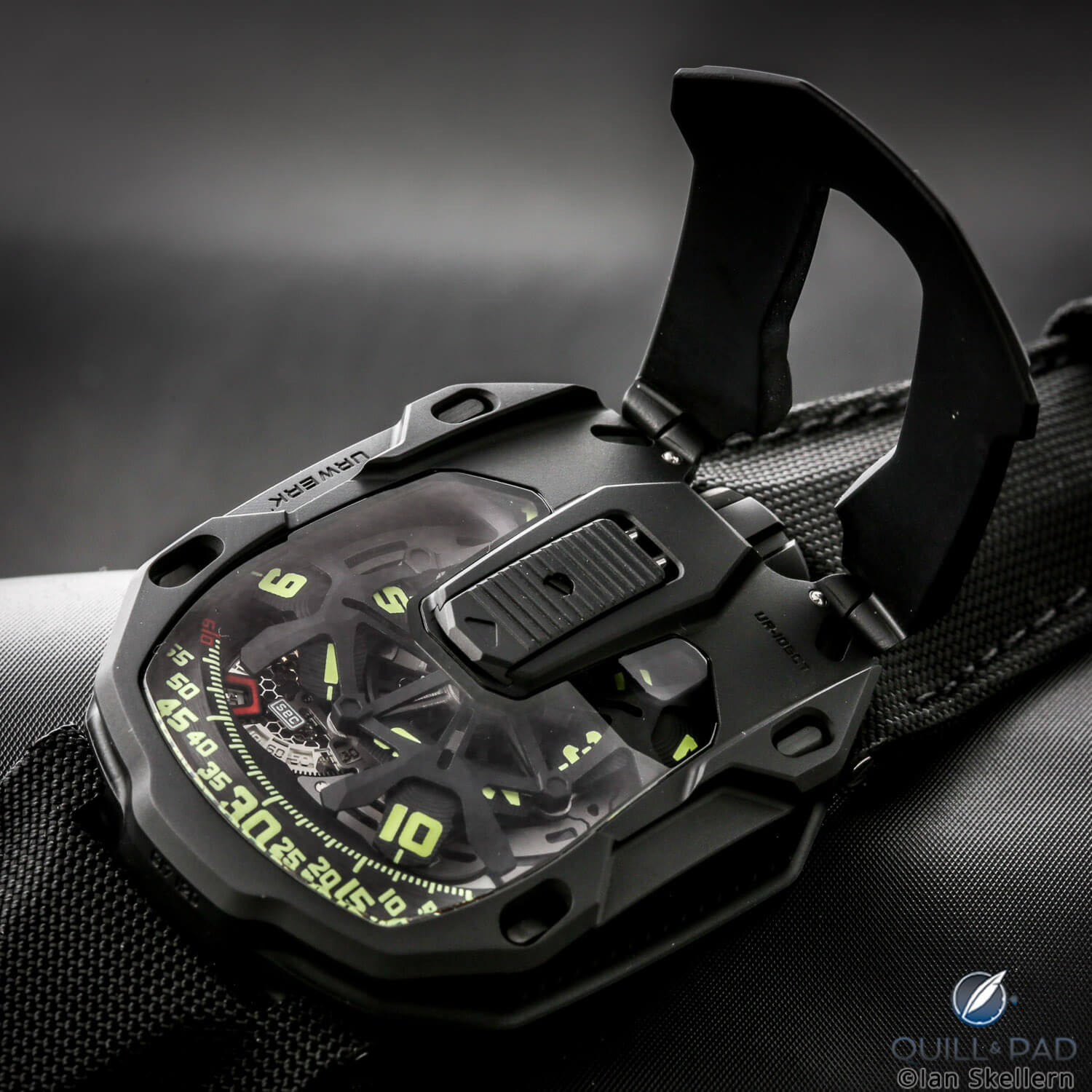by Ashton Tracy
The word “independent” is used frequently in connection with watchmakers and brands that couldn’t be more different in their scope; and we seem to be seeing more “independent watchmakers” and “independent niche brands.”
In this new age of “independents” how can we determine who actually is and who isn’t (but claims to be) independent?

MB&F HM6 Alien Nation is the realization of one man’s vision (Maximilian Büsser), not that of a committee
Independent watchmaking isn’t defined by who foots the bill. Neither is it reserved for only those who painstakingly create all their parts by hand. Independence is much more than that.
For me, it is the passion and the ability to both see a vision and to realize that vision that are the hallmarks of the independent watchmaker.
I recently read an article stating that Nomos is an independent watchmaker. But what make this brand “independent” in the way that this term in normally used and the way that I personally define it – which is referring to lone-wolf watchmakers with little or no team, for example most members of the A.H.C.I. (Académie Horlogère des Créateurs Indépendants)?

Simplicity by Philippe Dufour
Nomos is independently owned in that it is not controlled by a large conglomerate or group, and if that were the only requirement then I would agree to class it as an independent watchmaker.
But then Rolex, Patek Philippe, and Audemars Piguet would also qualify as independents as they also meet the definition of independent ownership. It’s true that the word “independent” indicates you have total control over something and, yes, these brands do have total control.
However, nobody would ever class Rolex or Patek Philippe as independent watchmakers the way this term is generally used, so there must be other factors that need to be considered when earning the title of independence.
Who is independent?
We can use a company such as Greubel Forsey as a good example of who is independent.
Greubel Forsey is technically less independent than Rolex as the Richemont Group owns a minority (20 percent) share in the company. Yet, one would never conclude that Greubel Forsey is not an independent watchmaker. Why not?

Greubel Forsey Quadruple Tourbillon Blue
The passion, creativity, and drive of Robert Greubel and Stephen Forsey and their team is what sets them apart, making them“independent” in my eyes. The fact that Richemont owns a minority stake has no bearing on this; it does not change the passion, drive, or extreme quality of the small production in any way.
The Académie Horlogère des Créateurs Indépendants (A.H.C.I.) organizes independent watchmakers in a loose grouping. Its mission statement claims: “To perpetuate independent watch and clockmaking by: promoting the unique character of handmade timepieces, attracting the world’s most creative independent watchmakers.”
In connection with that organization, one of the world’s greatest independent watchmakers and the group’s co-founder, Svend Andersen, is quoted as saying, “At the AHCI you can touch the watchmaker who makes your watch.”

Svend Andersen’s “Dogs Playing Poker” combined with Konstantin Chaykin’s Joker, a watch introduced at Baselworld 2018
That in my opinion is the definition of a true independent watchmaker. Members of the academy include titans of independence such as Philippe Dufour, co-founder Vincent Calabrese, and Kari Voutilainen.
Yes, it is the watchmakers you can touch, interact with, and speak to individually that are the true independent watchmakers. Those with a true passion for their craft, caring about every bridge and wheel constructed and finished. It has little to do with who is pulling the purse strings.

Voutilainen Masterpiece 8 Decimal Repeater
Watchmakers labeled as independent definitely vary in their methods, though: there are some who construct the majority of their movements, cases, dials, and hands entirely in house, though these are few and far between. One example of this type of watchmaker was the late George Daniels, who famously taught himself to do everything alone.
There are others who develop movements with all or most being bought in.
Some refinish existing (vintage) movements and make the cases, dials, and hands like the Struthers in England.
Still others purchase all components from an outside manufacture and assemble in house.
And there is everything in between.
If the credentials to qualify as independent were only that the watchmaker him- or herself was able to be seen, met with, and spoken to, all of the above could qualify. But is there more?
What makes independence?
Independence doesn’t necessarily mean you have to make all your components in house. If this were the case no one would qualify.
I take no issue with watchmakers sourcing components that are difficult to manufacture or even using existing movements and re-working them. A great example I have seen of this lately would have to be Struthers.

Engraved back of the Struthers Kullberg Edition
Craig and Rebecca Struthers were originally taking vintage Omega and other movements, refinishing them to a very high standard, then constructing cases and dials for them. They are currently working on their own movement, which will interestingly utilize an English lever escapement. Kari Voutilainen, while making his movements in house today, began by re-developing existing complicated movements to create his Decimal Repeaters.
In my book, it is especially creative and admirable to think outside of the box and start a career with a vintage movement while working your way up to creating something in house if that is the desired strategy.
It’s that passion and drive that separates true independent watchmakers from the rest.

Urwerk UR-105CT with flip-up cover
And, let’s not confuse independent brands with micro brands (find a good description of a micro brand in Haute Horlogerie Enthusiast John Keil Goes Micro Brand And Launches WatchGauge, A Novel Community And Retail Site).
Assembling watches in a particular city or town (or even having them made and/or assembled elsewhere and then shipped from xx) and calling it “made in xx. . .” also doesn’t give a company the right in my mind to the “independent” moniker.
There is nothing wrong with these brands, but they aren’t independent watchmakers. They are micro brands.
The watch industry needs a wide variety of brands and makers
We need everyone from makers that construct nearly everything by hand to the new micro brands and established watch brands – and everything in between.
These companies all have their rightful places, and I respect them all.
Customers vary and so do budgets, what suits one may not suit another: variety, after all, is the spice of life.
However, not every maker can obtain the title of independent watchmaker and not all of them deserve to have it. There is nothing wrong with that, it’s just the way it is.
It takes true talent, hard work, and passion to be an independent watchmaker, and that is what sets these mavericks above the rest.
You might also enjoy the following articles on independent watchmakers:
Why Philippe Dufour Matters: Luckily It’s Not A Secret
Why I Bought It: Vianney Halter Deep Space Tourbillon
5 Watches By Independent Watchmakers Paul Gerber, Habring2, Struthers, Vincent Calabrese And Christiaan Van Der Klaauw
Why I Bought It: Konstantin Chaykin Joker
Ferdinand Berthoud Chronomètre FB 1R.6-1: Distinctly Different, Technically Superlative (And Videos)
The Watch That Changed My Life: The Jean Daniel Nicolas Two-Minute Tourbillon By Mr. Daniel Roth
Leave a Reply
Want to join the discussion?Feel free to contribute!





















































Rolex, Patek, and AP are independent watch makers. Yes, all three produce countless number of watches per years, but all three are independents. Just because a person might not consider the three independents doesn’t change the fact that all three are independent and not owned by a watch conglomerate.
You are correct, as my article points out, but I highly doubt they would be referred to as independents in the context we use the term today.
Can’t we just use a number to decide who is independent? Rolex at millions, certainly is not. Let’s call it under 1,000 a year makes an independent!!! Now lets hear those over that wouldn’t make the cut, like FP Journe….
“MB&F HM6 Alien Nation is the realization of one man’s vision (Maximilian Büsser), not that of a committee”
Max should have had a committee.
It was interesting when you talked about how watchmakers have to have passion and the ability to realize a vision. In my opinion, it can also be important to have the right tools and equipment to allow for the needed precision in watchmaking. This can include an angle head to increase maneuverability in the manufacturing process.